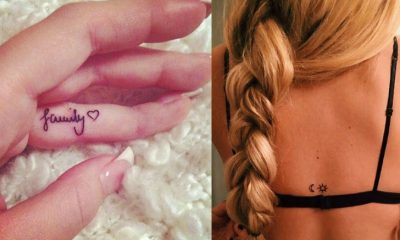
You probably wouldn’t even consider eating a slice of moldy bread, but there might be just as much bacteria present in the makeup you put on your face every day. There are many ways for bacteria to multiply in your makeup. The bacteria in the natural oils on your face can transfer onto your brushes and applicators, which can then contaminate the makeup products they touch. Failing to replace your makeup products when their shelf life is up can also facilitate bacterial growth.
Regardless of how it got there, bacteria in your makeup can lead to severe acne and other skin problems. Taking good care of your makeup and your makeup tools is important to keep your makeup–and your skin–clean and bacteria-free.
1. Don’t Keep Products Around Too Long
Bacteria is more likely to grow in your makeup the longer you keep it around. Even if they don’t have expiration dates printed on their packaging, makeup products do expire. Always throw away your makeup after its shelf life is up, even if it still seems to be in good condition. You never know what nasty invisible bacteria might be lurking there.
You shouldn’t keep face makeup–stick and liquid concealer, liquid foundation, powder, etc.–around for longer than a year. As for eye makeup, throw mascara and eyeliner away after three months but feel free to keep powder eye shadow around for up to two years.
2. Wash Your Brushes
The importance of washing makeup brushes is common knowledge, but many women still fail to wash their brushes, sponges, and other makeup applicators as frequently or as thoroughly as is necessary to prevent a build-up of dirt and oils. This build-up can then transfer to your makeup during your application process and lead to bacterial growth.
Make sure you’re washing your brushes properly and regularly. You should clean any brushes, sponges, or applicators that you use daily to apply foundation, concealer, and other makeup to your face at least every week. You can wait two weeks to a month to wash brushes that you only use to apply eye makeup. Use a gentle cleanser designed specifically for use on makeup brushes to keep your brushes in good condition–many regular soaps are too harsh for their more delicate bristles. Always let your makeup tools dry completely before you shove them in a drawer. Damp brushes in dark places with minimal airflow is a recipe for bacterial growth.
3. Avoid Using Your Fingers
Your fingers can be valuable makeup application tools. Many women even prefer applying makeup with their fingers than by using brushes and applicators. However, using your fingers to transfer makeup directly from its container to your skin can cause bacteria to grow in your makeup. Dirt and oils on your fingers can easily transfer from your skin to your makeup.
If you do apply makeup with your fingers, always use a clean makeup spatula or other applicator to transfer makeup from its original container to your hands. This extra step prevents your fingers–and the bacteria on them–from coming into direct contact with your makeup. No matter what, always wash your hands thoroughly immediately before applying your makeup to remove excess dirt and oils before touching your makeup or your face.







